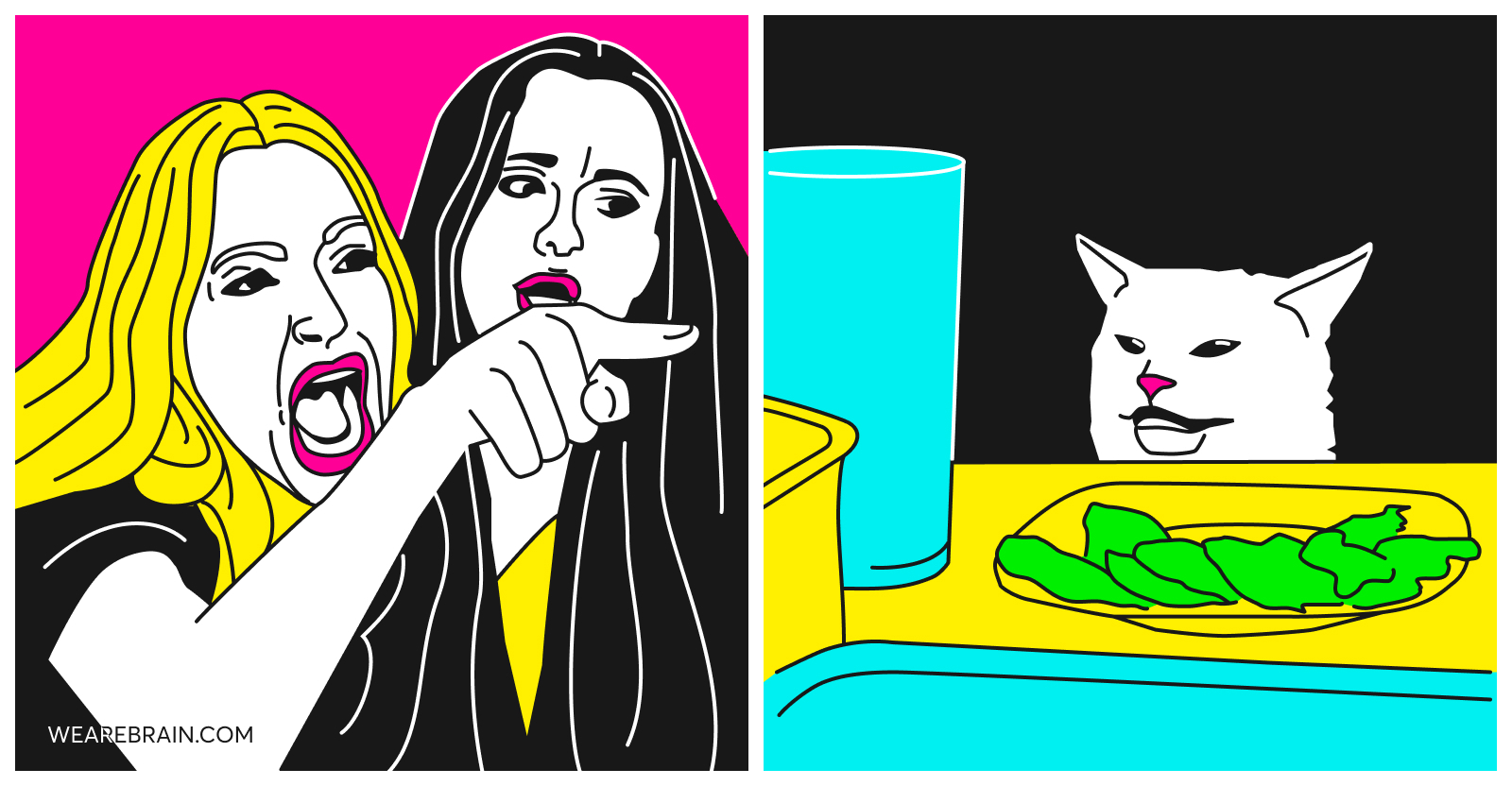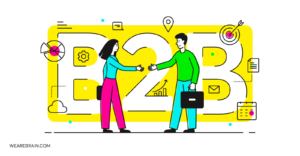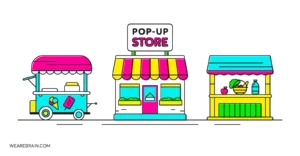Meme marketing: Using relatable images to connect

Memes have quickly become a pervasive part of internet culture over the past decade. As a way for people to express ideas via images, video clips, and GIFs, this contemporary form of digital hieroglyphs is also helping brands get closer to their audience.
Meme marketing is a way for brands to leverage this cultural phenomenon to promote products and themselves in a fun and engaging way. Through relatable, humorous, and easily shareable content, brands are able to enhance their brand voice and personality to drive engagement and customer loyalty.
Let’s take a look at how relatable images can drive brand connection.
What is a meme?
Memes are humourous graphic representations of cultural ideas and behaviours that can be replicated. Their meaning can evolve based on knowledge of their contextual origin. Memes are highly relatable units of repurposed media which express specific social, political, or cultural meanings and align with the current state of public consciousness.
Memes are also cultural conversation tools that have spread through social media networks over the past decade. But the concept of memes has been around ever since humans developed symbolic systems centuries ago.
However, the term “meme” was coined by evolutionary biologist Richard Dawkins in his 1976 book, The Selfish Gene. To explain how ideas evolve and are shared across different cultures, Dawkins draws comparisons to how biological genes control their own reproduction and transmission. In this context, memes carry information and can be replicated and transmitted among people, with the ability to evolve and mutate at random.
The word “même” in French means “same” and the word “mimoúmai” in Greek means “to imitate”. Dawkins states, “We need a name for the new replicator, a noun that conveys the idea of a unit of cultural transmission, or a unit of imitation.” He wanted to use a word that sounded like “gene.” Thus, ‘meme’ suited this perfectly.
Although it is difficult to determine when the first meme originated, it is generally understood that meme culture began in the late 2000s through websites such as 9GAG, Reddit, and Imgur. The subsequent rise of social media platforms such as Facebook and Twitter launched meme culture into the mainstream.
Today, the global population of internet users either view, share, or create memes on a daily basis, as this form of communication has become embedded into our modern culture.
Meme marketing explained
Memes are more than just providing satirical commentary on human behaviour to amuse your friends. When leveraged appropriately, they can be powerful marketing tools that brands can use to drive engagement across digital channels.
Meme marketing refers to the process of deploying meme content as a strategic marketing initiative to promote a service, product, or brand using humour as a primary mode of engagement. It’s a fun way for brands to enhance their content – plus, it costs nothing and can boost content engagement tremendously.
The use of memes in a marketing context can be extremely effective as they are highly shareable and enjoyable pieces of content. Generally carefree in nature, a well-timed meme can become viral very quickly, which is why marketers are leveraging them into their marketing strategies to boost engagement.
How memes can help your marketing efforts
Memes are how most millennials and Gen Zs communicate digitally. Approximately 55% of people aged between 13-35 share memes every week, while 30% send them every day. Millennials and Gen Z accounted for 72% of the global luxury market in 2022, urging marketers to leverage meme marketing with viral content strategies to reach this lucrative demographic.
Developing engaging and relatable media content to cash in on trends can help brands engage with their audiences in a friendly, non-aggressive sales-driven manner which establishes a sense of association and encourages brand loyalty.
The physiology behind the power of memes is that they are about connection as much as they are about humour. Memes have the power to build online communities of like-minded individuals – some good, others not so. The famous Pepe the Frog is an example of how a meme can divert drastically from its original context when it is appropriated by different subcultures after proliferated transmission and evolution (natural selection).
The point is, tapping into different subcultures associated with particular memes brings brands closer to larger audiences who otherwise might not have interacted with the brand.
But most importantly, meme marketing is a powerful way for organisations to express their brand voice and personality. What brands say and how they say it helps set them apart and gives customers an idea of who is behind the brand – establishing a personalised connection.
When brands leverage meme marketing it shows that they are aligned with the contemporary zeitgeist, have a sense of humour, and are relatable. These characteristics establish quick and deep customer-brand relationships that drive brand engagement and loyalty. It is an engaging way for brands to show off their values and favourably position themselves in the social narrative.
There is a slight risk, however. Brands need to have their finger on the cultural pulse and use only popular and relevant memes to get engagement benefits. An out-of-touch or unfunny meme will quickly be pointed out by internet users, which will backfire.
Meme marketing examples
Due to their pervasiveness, brands generally prefer to recycle popular memes but add a personalised twist that is relevant to their promotional goals. Here are a few examples of meme marketing done right:
Netflix

The popular streaming platform is known for its humorous meme marketing and witty engagement with its followers on social media. It uses informal language and contemporary internet lingo to connect with its audience on a personal level.
To drive its meme-marketing initiatives, Netflix launched Netflix is a Joke on its social platforms which has over 6 million followers (Instagram, YouTube, and Twitter combined) and receives high engagement rates. Interestingly, the platform rarely uses recycled and popular memes, but instead, creates new memes from their own content and applies references to popular memes to make them instantly relatable. This promotes their own content while still tapping into meme culture.
Disney

Gen Z comprises a large majority of social media users so it is no wonder that the popular animation studio is performing well with its meme marketing. Disney content is highly relatable to the majority of millennial and Gen Z users, so Disney has leveraged this to drive brand awareness and engagement.
Using geolocation techniques, the entertainment giant shares content that is relatable to different audiences around the world from its multiple global social media accounts. Like Netflix, Disney creates new memes using its own content, which is arguably more generationally relatable than Netflix’s content. Because Disney’s meme marketing content is a perfect blend of nostalgia and contemporary zeitgeist, it attracts a larger audience and encourages more engagement.
WeAreBrain

We’ve been known to utilise a good meme or two in our social content to drive engagement with our audience. Most recently, we posted a meme on our social media channels to get in on the recent ChatGPT trend.
We used the popular meme template ‘Is this a Pigeon?’ to make a self-referential and satirical social commentary about how everyone on LinkedIn became a ChatGPT expert all of a sudden.
Become relatable to drive engagement
Meme marketing can be a powerful element of your overall marketing strategy when used correctly. Rather than hard-selling promotional taglines, memes are an effective yet simple way to engage with audiences in a friendly way that establishes a strong connection.
Sharing memes is how the internet society communicates, so leveraging this phenomenon to promote content is an opportunity that should not be missed. Relatable, engaging, and easily shareable content is an effective way to promote brand awareness – making meme marketing an essential tool for brands.
David Roman
Working Machines
An executive’s guide to AI and Intelligent Automation. Working Machines takes a look at how the renewed vigour for the development of Artificial Intelligence and Intelligent Automation technology has begun to change how businesses operate.







